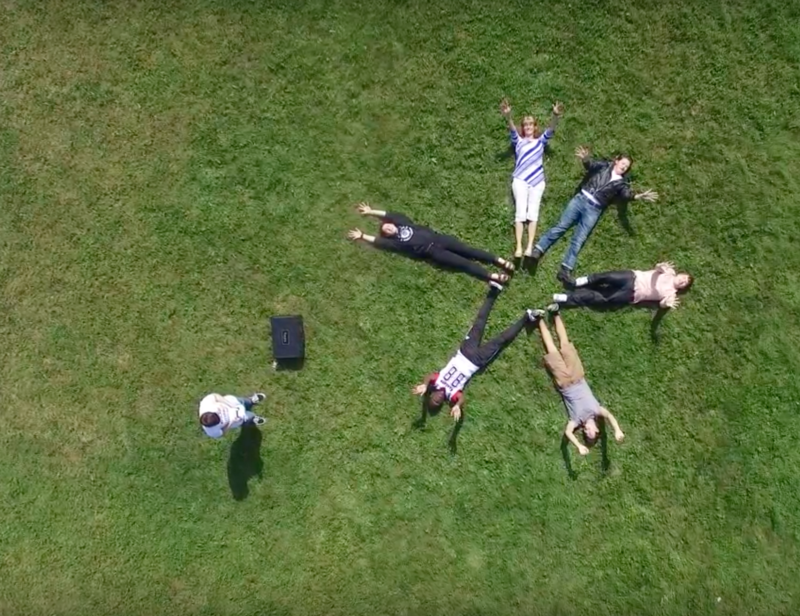As PBL educators, we encourage students to steer their own learning. This requires each and every student to determine a point of inquiry, design a research strategy, craft a project and present their findings to others. While there are a slew of online resources available to students, many tend to distract rather than empower students during their project process.
So what digital tools are most valuable for project-based learners? To find out, we asked the learners themselves.
In identifying which resources were of most use for PBL domination, we asked the 7th-12th grade students from Birchwood Blue Hills Charter School (BBHCS) for their vote. With their input, we tallied up the ten most revisited sites students use to power their project work.
Here are the top ten, free, student recommended resources which continue to spark project-based learning.

It comes as no surprise that Google’s got game. All students cited Google G-Suite for Education as their go-to tool for all things PBL. In using mail to contact experts during project research, docs to co-edit work, slides to create project presentations, forms to collect data and sheets to house numerical data, G-Suite is where students spend a lot of their time. Google sites also come in handy for students as they can create simple sites for their team, projects, events or personal learning plans.
As a way to kick-start each individual project, students love this easy-to-use mind mapping tool. Coggle provides a way to brainstorm, understand, organize and plan. Students find Coggle’s shared features especially helpful when pre-writing and collaboratively planning projects.
With the mission to provide “a world class education for anyone, anywhere, 100% free,” this well-loved resource site was most recognized for offering foundational math and science support for respective project work. Offering quality educational material across subject areas, Khan has searchable video tutorials and supportive course curriculum that breaks down complex information for students.
Serving as a powerful research site for U.S. History projects, the National Archives carries high-quality primary resources for student research. Students also use the US National Archives Youtube Channel to search video footage, which includes links to presidential libraries.
iCivics games and curriculum units are used by students, as well as educators, to explore how our government works. In reimagining civic education, iCivics creates innovative content to deepen civic engagement with free and relevant learning. This site inspires project work relating to our constitution, formations of government and growing nation.
Using this site develops “builds stronger writers” as students work through personalized, adaptive exercises and strengthen their vocabulary. No Red Ink allows students to view personalized data and track their progress, serving to be useful within any project context.
Students appreciate this site as it features “interactive, standards-based resources in the core disciplines.” Students click on a subject area and then use the left side menu to filter a search by discipline, grade level, type and compatibility. Students often surf this site for project ideas when looking to gain specific competencies.
Online Writing Lab (OWL) serves as the students’ go-to site for writing. Maintained by Purdue University, OWL gives students answers to all of their writing questions and will help them understand grammar and mechanics, as well as style guides for formatting. This helps students with technical aspects of their PBL research, writing and publications.
For students that want to learn a foreign language, this site is personalized and gamified as it teaches vocabulary and motivates with rewards. Studies have shown that “34 hours of Duolingo are equal to 1 university semester of language courses.” Students find this to be free, fun and addictive, especially when working on a project to elevate language learning.
Google snags another spot on the list with their Applied Digital Skills project based curriculum. These ready-to-use video lessons “teach digital skills that have immediate, real-life application.” Students earn elective credit while also preparing themselves with skills for the future in our digital world. This tool is useful for both student-led or teacher-led learning and provides invaluable skill building.

This list serves as the tip of the iceberg as there are numerous other BBHCS recognized sites that students use to enhance their education. Regardless of the tool, it is important to consider your tech proficiency within project work.
If you are technology literate, you’re able to manipulate a device (i.e. Turn it on and use basic functions). If you are using technology to enhance, you’re interacting with a new technology and learning new functions (i.e. Take notes on the iPad or read a textbook on a device). If you are using technology in a transformative way, you’re using a device to do something that you couldn’t do in the past (i.e. Create videos, connect with people around the world, or share things with others at any time, from any place).

With this in mind, we should be pointing students toward free web tools to elevate their PBL practice while inquiring, strategizing, crafting project development and presenting. Students, after all, need to be prepared for jobs that don’t exist yet, that will require skills that haven’t been defined. Let’s all strive to use technology in a transformative way and encourage more students to do the same.